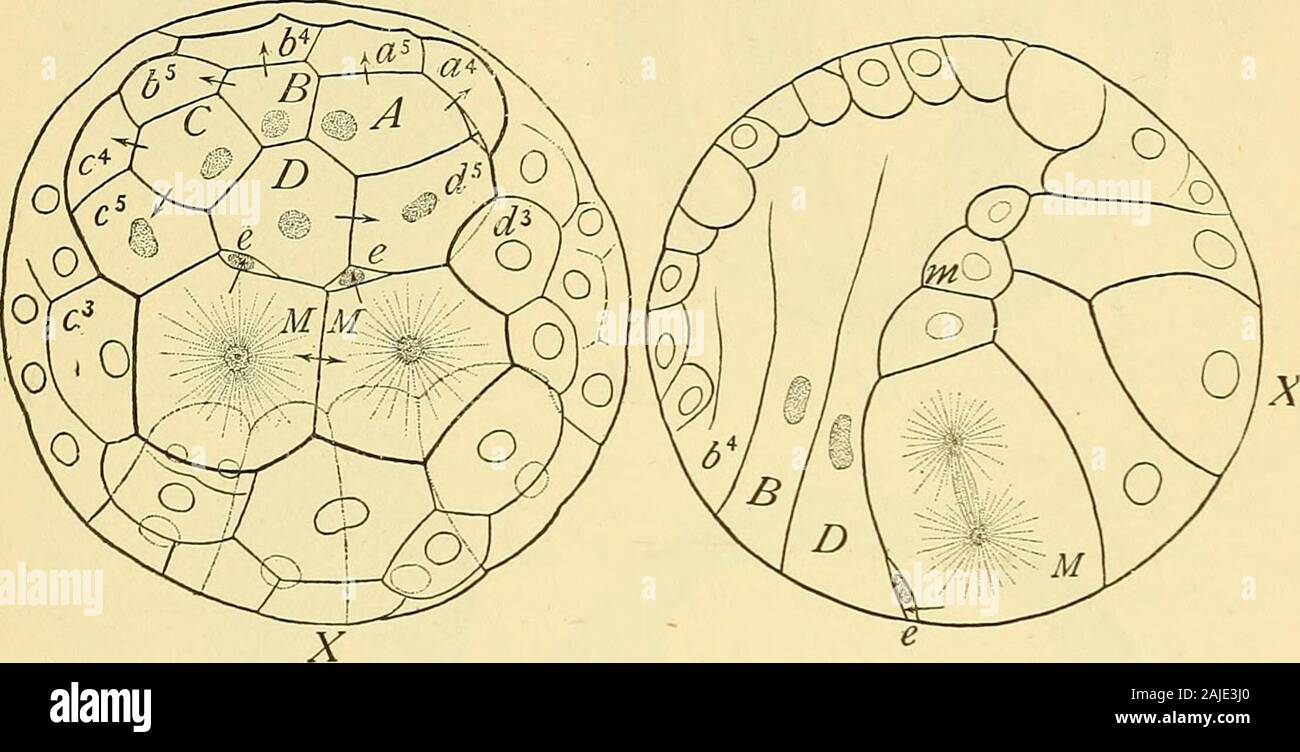The cell in development and inheritance . cells referred to above. In some of the annelids, e.g. inAricia, where they were first observed,^ these cells are derived fromthe very large primary mesoblast-cell, which first divides into equalhalves. Each of these then buds forth a cell so small as to be nolarger than a polar body, and then immediately proceeds to give rise 1 Cf. Wilson, 92, 98. GEOMETRICAL RELATIONS OF CLEAVAGE-FORMS Z7Z to the mesoblast-bands by continued divisions, always in the sameplane at right angles to that in which the rudimentary cells areformed (Fig. 174). The cause of th

Image details
Contributor:
The Reading Room / Alamy Stock PhotoImage ID:
2AJE3J0File size:
7.2 MB (287.2 KB Compressed download)Releases:
Model - no | Property - noDo I need a release?Dimensions:
2214 x 1129 px | 37.5 x 19.1 cm | 14.8 x 7.5 inches | 150dpiMore information:
This image is a public domain image, which means either that copyright has expired in the image or the copyright holder has waived their copyright. Alamy charges you a fee for access to the high resolution copy of the image.
This image could have imperfections as it’s either historical or reportage.
The cell in development and inheritance . cells referred to above. In some of the annelids, e.g. inAricia, where they were first observed, ^ these cells are derived fromthe very large primary mesoblast-cell, which first divides into equalhalves. Each of these then buds forth a cell so small as to be nolarger than a polar body, and then immediately proceeds to give rise 1 Cf. Wilson, 92, 98. GEOMETRICAL RELATIONS OF CLEAVAGE-FORMS Z7Z to the mesoblast-bands by continued divisions, always in the sameplane at right angles to that in which the rudimentary cells areformed (Fig. 174). The cause of the definite succession of equal andunequal divisions is here wholly unexplained. No less difficult is theextreme inequality of division involved in the formation of the polarbodies. We cannot explain this through the fact that deutoplasm iscollected in the lower hemisphere; for, on the one hand, the succeed-ing divisions (first cleavages) are often equal, while, on the otherhand, the inequality is no less pronounced in eggs having equally. A B Fig. 174.— Rudimentary blastomeres in the embryo of an annelid, Aricia. A. From lower pole ; rudimentary cells at e. e ; the heavy outline is the lip of the blastopore.B. The same in sagittal optical section, showing rudimentary cell {e), primary mesoblast {^f), and mesoblast-band (m). distributed deutoplasm, or in those, like echinoderm-eggs, which are alecithal. Such cases prove that Balfours law is only a partial explanation, being probably the expression of a more deeply lying cause, andthere is reason to believe that this cause Hes outside the immediatemechanism of mitosis. Conklin (94) has called attention to thefact^ that the immediate cause of the inequality probably does notlie either in the nucleus or in the amphiaster ; for not only thechromatin-halves, but also the asters, are exactly equal in the earlyprophases, and the inequality of the asters only appears as thedivision proceeds. Probably, therefore, the cause lies in some r